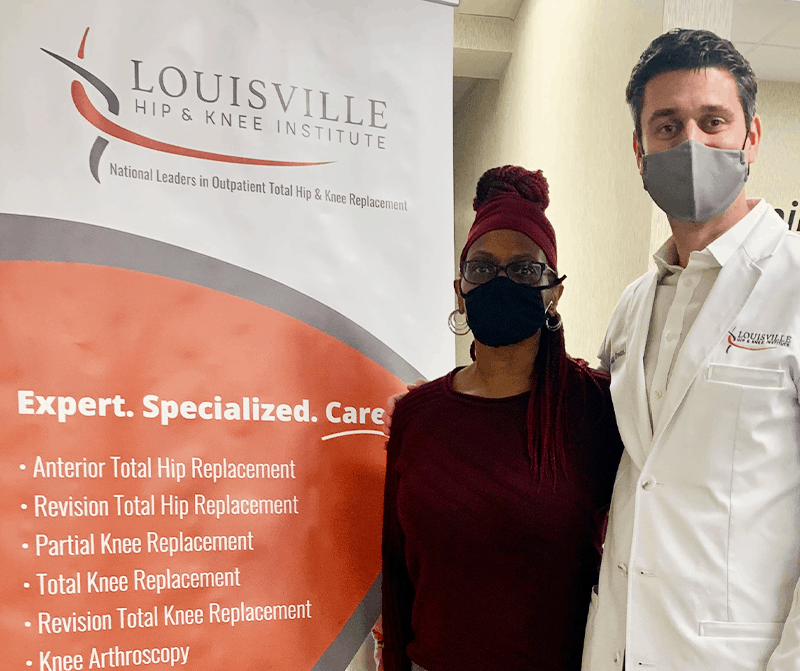
Revision Knee Replacement: Restoring Mobility and Reducing Pain
Overview
Revision knee replacement is a surgical procedure to replace or repair a failed knee implant from a previous total or partial knee replacement. This surgery addresses complications such as implant loosening, infection, wear, or persistent pain and aims to restore mobility and improve the patient’s quality of life. Revision knee replacement is often more complex than the initial procedure due to bone and surrounding tissue changes.
Causes of a Meniscus Tear
- Implant Loosening or Wear: The artificial components may loosen or wear out over time, causing pain and instability.
- Infection: An infection in the knee joint can damage surrounding tissues and compromise the implant.
- Instability: Weakness or improper alignment of the implant may lead to instability or difficulty walking.
- Stiffness: Scar tissue or other complications can limit knee movement, requiring revision.
- Fracture: Trauma or accidents can damage the bone surrounding the implant, necessitating surgery.
- Allergic Reactions: Rarely, some patients may react to the materials used in the implant.

Symptoms Indicating a Need for Revision Surgery
- Persistent knee pain or swelling
- Difficulty bearing weight
- Instability or a sensation of the knee “giving way.”
- Reduced range of motion or stiffness
- Visible deformity in the knee area
- Signs of infection, such as redness, warmth, or fever
Diagnosis and Evaluation
To determine if a revision knee replacement is necessary, your surgeon will:
- Review Medical History: Discuss symptoms, past surgeries, and any complications.
- Perform a Physical Examination: Assess knee alignment, stability, and range of motion.
- Order Imaging Tests:
X-rays: Check for implant loosening or bone damage.
MRI or CT Scans: Provide detailed views of soft tissues and bone structure.
Bone Scans: Detect early signs of loosening or infection. - Conduct Laboratory Tests: Blood tests or joint fluid analysis to identify infections or inflammation.
The Revision Procedure
Revision knee replacement involves removing and replacing the old implant with new components. Depending on the severity of the issue, the procedure may include:
- Implant Removal: Carefully extract the failed or worn components.
- Bone Preparation: Repairing or reconstructing bone loss using bone grafts or metal augments.
- New Implant Placement: Inserting a specialized implant designed for revision procedures.
- Soft Tissue Balancing: Ensuring ligaments and tendons support the new implant for stability.
Recovery and Rehabilitation
Recovery from revision knee replacement may take longer than the initial surgery due to the complexity of the procedure. Key elements of recovery include:
- Physical Therapy: A tailored program to regain strength, flexibility, and range of motion.
- Pain Management: Medications and techniques to control pain and inflammation.
- Assistive Devices: Walkers or crutches are used for initial mobility support.
- Follow-Up Care: Regular visits to monitor progress and ensure proper healing.

Risks and Complications
While revision knee replacement can significantly improve quality of life, it carries some risks, such as:
- Infection
- Blood clots
- Implant loosening or failure
- Bone fractures during surgery
- Reduced range of motion or stiffness
Prevention of Implant Failure
To minimize the risk of requiring revision surgery:
- Follow post-operative instructions carefully after your initial knee replacement.
- Maintain a healthy weight to reduce stress on the implant.
- Engage in low-impact exercises to strengthen muscles around the knee.
- Avoid high-impact activities that could damage the implant.
- Regularly follow up with your surgeon for check-ups.
FAQs
How do I know if I need a revision knee replacement?
Persistent pain, instability, or signs of infection after your initial knee replacement are key indicators. Consult a specialist to evaluate your condition.
What is the recovery time for revision knee replacement?
Recovery typically takes 6-12 months, depending on the complexity of the procedure and your commitment to rehabilitation.
Can revision knee replacement fix all issues with my knee implant?
While it addresses most complications, some issues like scar tissue or bone loss may require additional treatments.
Are there alternatives to revision knee replacement?
Non-surgical treatments such as physical therapy, medications, or injections may help manage symptoms.
Does insurance cover revision knee replacement?
Most insurance plans cover the procedure if medically necessary. Check with your provider for specific details.
When to See a Doctor
Consult an orthopaedic specialist if you experience:
- Persistent or worsening knee pain
- Swelling or instability
- Signs of infection
- Difficulty performing daily activities due to knee issues
Next Steps
At Louisville Hip & Knee Institute, our experienced orthopaedic surgeons specialize in complex revision knee replacement surgeries. We provide personalized care and advanced surgical techniques to help you regain mobility and live pain-free. Schedule a consultation today to explore your options for revision knee replacement.


